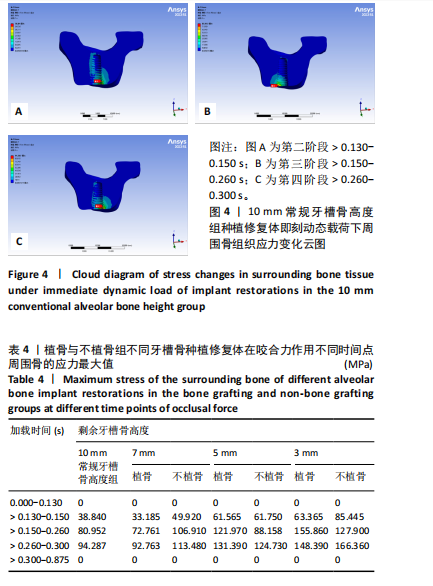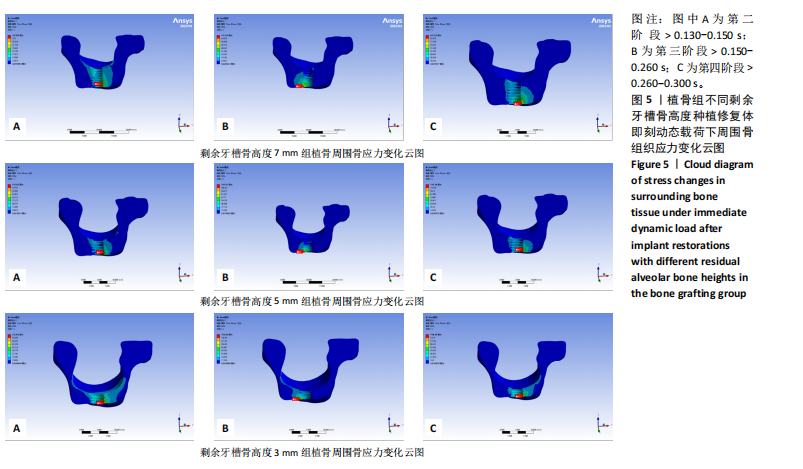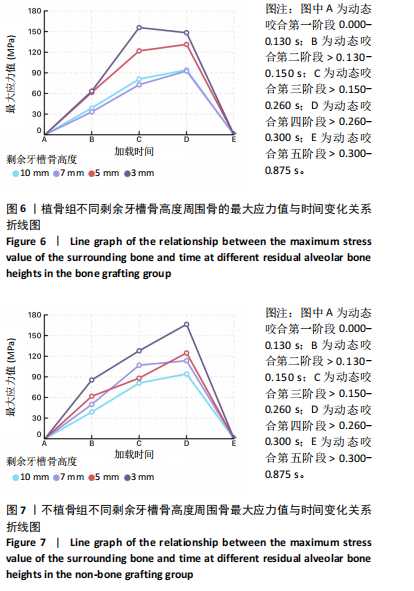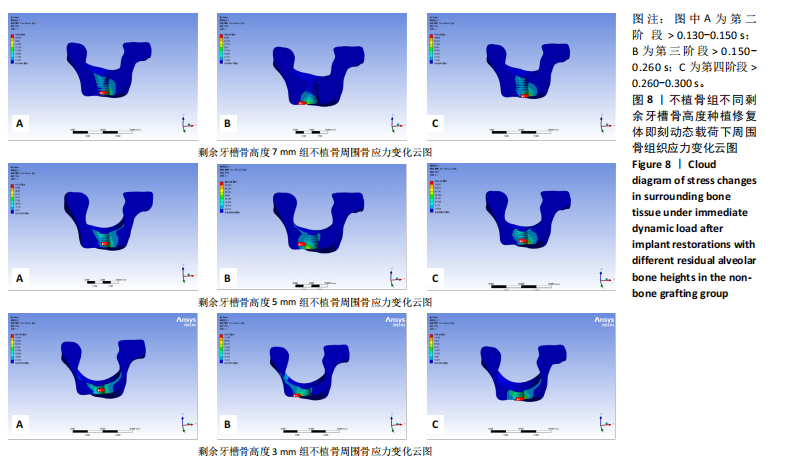[1] 陈浚,徐光宙.上颌窦底提升技术的研究现状[J].中国口腔颌面外科杂志,2023,21(3):291-300.
[2] DENG Y, TONG C, GAO K, et al. Modified internal sinus elevation for patients with low residual bone height: A retrospective clinical study. Clin Implant Dent Relat Res. 2023;25(3):458-472.
[3] CHAUSHU L, CHAUSHU G, KOLERMAN R, et al. Histomorphometrical Assessment of Sinus Augmentation Using Allograft (Particles or Block) and Simultaneous Implant Placement. Sci Rep. 2020;10(1):9046.
[4] LYU M, XU D, ZHANG X, et al. Maxillary sinus floor augmentation: a review of current evidence on anatomical factors and a decision tree. Int J Oral Sci. 2023;15(1):41.
[5] 解孟佳,周志霖,张雅彤,等.剩余骨高度< 3 mm时联合CGF与Bio-Oss骨粉行液压法上颌窦内提升术并同期种植一例[J].海南医学,2023,34(20):3008-3011.
[6] MANSO MC, WASSAL T. A 10-year longitudinal study of 160 implants simultaneously installed in severely atrophic posterior maxillas grafted with autogenous bone and a synthetic bioactive resorbable graft. Implant Dent. 2010;19(4):351-360.
[7] 罗宝,黄咏瑜,刘伟,等.上颌窦内提升术同期种植内提3 mm以内植入骨粉与不植入骨粉的研究[J].临床口腔医学杂志,2022, 38(10):614-617.
[8] BOK S, GREENBLATT MB. Shaping the sinuses: a novel Krt14+Ctsk+ cell lineage driving regenerative bone formation. Cell Res. 2022;32(9):791-792.
[9] 刘佳怡,何雨桐,汪振华.有限元分析法在口腔修复学中的应用进展[J].医学综述,2019,25(16):3248-3252.
[10] 罗宇,江青松.口腔生物力学的研究方法[J].北京口腔医学,2023, 31(3):217-221.
[11] GAO X, MA S, HUANG B, et al. Effect of Age on Transalveolar Sinus Floor Elevation with Simultaneous Placement of Dental Implants: A Retrospective Study. Int J Oral Maxillofac Implants. 2023;38(4):811-819.
[12] LEKHOLM U. Surgical considerations and possible shortcomings of host sites. J Prosthet Dent. 1998;79(1):43-48.
[13] JAMCOSKI VH, FAOT F, MARCELLO-MACHADO RM, et al. 15-Year Retrospective Study on the Success Rate of Maxillary Sinus Augmentation and Implants: Influence of Bone Substitute Type, Presurgical Bone Height, and Membrane Perforation during Sinus Lift. Biomed Res Int. 2023;2023:9144661.
[14] 中华口腔医学会口腔种植专业委员会.上颌窦底提升专家共识:上颌窦间隔[J].中国口腔种植学杂志,2024,29(2):103-108.
[15] 杜军,万哲.植入位点及轴向对上颌中切牙即刻种植即刻负重应力影响的三维有限元分析[J].医用生物力学,2023,38(2):353-359.
[16] 孙江伟,王俊祥,白布加甫·叶力思,等.不同光滑颈圈种植体修复时应力分布的三维有限元分析[J].中国组织工程研究,2023, 27(7):1004-1011.
[17] 徐大鹏,景捷,马璐,等.上颌窦内提升术最佳二期修复时间的有限元分析[J].中国组织工程研究,2024,28(11):1647-1652.
[18] 陈新民,赵云凤.口腔生物力学[M].北京:科学出版社,2010:225-234.
[19] 王谜,刘定坤,邹俊东,等.有限元法模拟下颌磨牙咀嚼载荷的研究进展[J].口腔医学,2020,40(7):673-676.
[20] 姜姗.不同角度基台在上颌第一磨牙区种植修复的三维有限元动态载荷分析[D].锦州:锦州医科大学,2023.
[21] CORONEL ZABALBU B, CÁCERES OA, VERGARA-BUENAVENTURA A. Levantamiento del seno maxilar sin injerto óseo e implante simultáneo: un reporte de caso [Graftless maxillary sinus lift with simultaneous implant placement: a case report. Rev Cient Odontol (Lima). 2024; 12(2):e202.
[22] 何添荣,陈玉英,许香娜,等.上颌窦内外侧宽度对不植骨上颌窦内提升的成骨影响[J].口腔生物医学,2021,12(4):257-261.
[23] 胡宁,李凤丹,江银华.植骨与否对上颌窦底内提升同期种植术临床疗效的影响[J].上海口腔医学,2023,32(1):101-104.
[24] 夏海斌,徐珺怡.上颌窦底内提升同期植入种植体的研究现状[J].中国口腔种植学杂志,2024,29(2):109-117.
[25] LIU L, YU WH, LI XT, et al. Clinical application study of immediate implantation without bone grafting in maxillary molars: a clinical study with one-year follow up. Br J Oral Maxillofac Surg. 2022;60(3):332-336.
[26] 薄湛南,何冬冬.不用骨移植材对穿牙槽嵴顶上颌窦底提升术疗效的影响[J].辽宁医学杂志,2024,38(3):74-76.
[27] SONG DS, KIM CH, KIM BJ, et al. Tenting effect of dental implant on maxillary sinus lift without grafting. J Dent Sci. 2020;15(3):278-285.
[28] PRAMSTRALLER M, FARINA R, FRANCESCHETTI G, et al. Ridge dimensions of the edentulous posterior maxilla: a retrospective analysis of a cohort of 127 patients using computerized tomography data. Clin Oral Implants Res. 2011;22(1):54-61.
[29] KOPECKA D, SIMUNEK A, BRAZDA T, et al. Relationship between subsinus bone height and bone volume requirements for dental implants: a human radiographic study. Int J Oral Maxillofac Implants. 2012;27(1):48-54.
[30] JADACH R, ASA’AD F, RASPERINI G, et al. Classifying Maxillary Sinuses of Polish Patients for Sinus Lift: A Pilot Study. Dent J (Basel). 2024;12(2):35.
[31] 马犇,朱佳栋,郑泽光,等.即刻种植和延期种植及植骨后延期种植的疗效比较[J].当代医学,2021,27(19):171-172.
[32] 邓大贵.即刻种植与延期种植在后牙区义齿种植中的应用效果分析[J].中国社区医师,2024,40(6):35-37.
[33] EINI E, YOUSEFIMANESH H, ASHTIANI AH, et al. Comparing success of immediate versus delay loading of implants in fresh sockets: a systematic review and meta-analysis. Oral Maxillofac Surg. 2022;26(2): 185-194.
[34] 詹红伟,王倩,移植,等.机械应力下骨细胞行为变化的研究进展[J].中国骨质疏松杂志,2024,30(2):250-256.
[35] 梅冰馨,刘克华,张太阳.即刻负重对前牙种植后骨量的影响[J].医疗装备,2022,35(3):90-92.
[36] GLAUSER R, LUNDGREN AK, GOTTLOW J, et al. Immediate occlusal loading of Brånemark TiUnite implants placed predominantly in soft bone: 1-year results of a prospective clinical study. Clin Implant Dent Relat Res. 2003;5 Suppl 1:47-56.
[37] ESPOSITO M, GRUFFERTY B, PAPAVASILIOU G, et al. Immediate loading of occluding definitive partial fixed prostheses vs non-occluding provisional restorations - 3-year post-loading results from a pragmatic multicentre randomised controlled trial. Eur J Oral Implantol. 2018; 11(3):309-320.
[38] MORRIS GA, STEINBERG MJ, DRAGO C. Full arch immediate occlusal loading using site specific implants: A clinical series of 10 patients (13 arches). J Prosthodont. 2023;32(3):204-213.
[39] ZANINOVICH M, DRAGO C. Prosthodontic criteria for maxillary immediate occlusal loading, surgical classifications of atrophic maxillae, and presentation of a new implant/anatomic classification system for immediate maxillary rehabilitation. J Prosthodont. 2024. doi: 10.1111/jopr.13898.
[40] MELLO CC, LEMOS CAA, VERRI FR, et al. Immediate implant placement into fresh extraction sockets versus delayed implants into healed sockets: A systematic review and meta-analysis. Int J Oral Maxillofac Surg. 2017;46(9):1162-1177.
[41] LANG NP, PUN L, LAU KY, et al. A systematic review on survival and success rates of implants placed immediately into fresh extraction sockets after at least 1 year. Clin Oral Implants Res. 2012;23 Suppl 5: 39-66.
[42] WIPAWIN R, AMORNSETTACHAI P, PANYAYONG W, et al. Clinical outcomes of 3-5 years follow-up of immediate implant placement in posterior teeth: a prospective study. BMC Oral Health. 2024;24(1):312.
[43] CRICCHIO G, IMBURGIA M, SENNERBY L, et al. Immediate loading of implants placed simultaneously with sinus membrane elevation in the posterior atrophic maxilla: a two-year follow-up study on 10 patients. Clin Implant Dent Relat Res. 2014;16(4):609-617.
[44] 吴越琳,刘加荣.三维有限元分析在口腔医学领域的研究进展[J].口腔医学,2021,41(7):659-663.
[45] 张孟婷,高岚.三维有限元下后牙牙体缺损修复的研究现状[J].河北医药,2024,46(8):1239-1243.
[46] 郭海涛,邓引昕,马攀,等.上颌窦底提升术后不同骨吸收高度种植体周围应力的三维有限元分析[J].口腔颌面修复学杂志,2023, 24(3):174-179.
[47] 王俊祥,孙江伟,白布加甫·叶力思,等.动态加载下3种基台材料对上颌角度植入种植修复体周围骨应力的影响[J].中国组织工程研究,2023,27(3):398-405.
[48] 张兴,刘英,陈松龄,等.上颌窦内提升不植骨同期种植术:3年临床回顾性研究[J].口腔医学研究,2016,32(1):46-49.
[49] BARROS F, FERNANDES CMDS, KUHNEN B, et al. Three-dimensional analysis of the maxillary sinus according to sex, age, skin color, and nutritional status: A study with live Brazilian subjects using cone-beam computed tomography. Arch Oral Biol. 2022;139:105435.
[50] DENG Y, MA R, HE Y, et al. Biomechanical analysis of the maxillary sinus floor membrane during internal sinus floor elevation with implants at different angles of the maxillary sinus angles. Int J Implant Dent. 2024;10(1):11.
[51] 罗宇,江青松.口腔生物力学的研究方法[J].北京口腔医学,2023, 31(3):217-221.
|




